American Whitewater and the Wild and Scenic Rivers Act
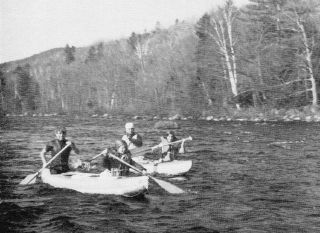 Paddlers love wild and free flowing rivers and have successfully advocated for their inclusion in the Wild and Scenic Rivers system for decades. Upon witnessing the loss of hundreds of miles of great rivers to water development projects and hydropower, paddlers were among the first activists to advocate for a national system to protect our nation's last free-flowing rivers. Articles in the AW Journal by paddlers like Oz Hawksley documented the grandeur of the Selway and other rivers in the 1960s. Through the American Whitewater Journal, Oz kept paddlers across the country informed on the progress of Wild Rivers legislation and the ultimate signing of the Wild and Scenic Rivers Act on October 2, 1968. Affiliate clubs became involved in education and outreach efforts, including a trip by Kayak and Canoe Club of New York to take Senator Kennedy (in the photo) and Interior Secretary Udall down the Hudson River to promote the Wild Rivers Bill, and efforts by the Wisconsin Hoofers to highlight the need to protect the Wolf River in Wisconsin while Gaylord Nelson was still Governor and before he joined the Senate. Over the decades and through today, paddlers continue to take an active role in securing new designations and advocating for protection for hundreds of rivers that agencies have determined to be “eligible” Wild and Scenic Rivers, but have not been formally designated.
Paddlers love wild and free flowing rivers and have successfully advocated for their inclusion in the Wild and Scenic Rivers system for decades. Upon witnessing the loss of hundreds of miles of great rivers to water development projects and hydropower, paddlers were among the first activists to advocate for a national system to protect our nation's last free-flowing rivers. Articles in the AW Journal by paddlers like Oz Hawksley documented the grandeur of the Selway and other rivers in the 1960s. Through the American Whitewater Journal, Oz kept paddlers across the country informed on the progress of Wild Rivers legislation and the ultimate signing of the Wild and Scenic Rivers Act on October 2, 1968. Affiliate clubs became involved in education and outreach efforts, including a trip by Kayak and Canoe Club of New York to take Senator Kennedy (in the photo) and Interior Secretary Udall down the Hudson River to promote the Wild Rivers Bill, and efforts by the Wisconsin Hoofers to highlight the need to protect the Wolf River in Wisconsin while Gaylord Nelson was still Governor and before he joined the Senate. Over the decades and through today, paddlers continue to take an active role in securing new designations and advocating for protection for hundreds of rivers that agencies have determined to be “eligible” Wild and Scenic Rivers, but have not been formally designated.
Learn more about about Wild and Scenic Rivers at rivers.gov
![]() Google Earth Wild and Scenic Rivers Map
Google Earth Wild and Scenic Rivers Map
![]() Google Earth USFS Eligible Wild and Scenic Rivers Map
Google Earth USFS Eligible Wild and Scenic Rivers Map
An Overview of the Wild and Scenic Rivers Act
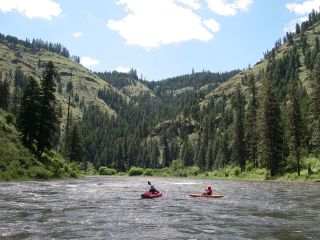 The Wild and Scenic Rivers Act requires the managing agency to “protect and enhance” the values for which the river was designated. This occurs through the development of a Comprehensive River Management Plan that provides management direction. The Act also prevents the construction of dams or other water development projects that disrupt the free flow of the river. The Wild and Scenic Rivers Act itself is relatively short (if you exclude the list of designated rivers) and easy to read and understand. The key goals of the Act are spelled out as follows:
The Wild and Scenic Rivers Act requires the managing agency to “protect and enhance” the values for which the river was designated. This occurs through the development of a Comprehensive River Management Plan that provides management direction. The Act also prevents the construction of dams or other water development projects that disrupt the free flow of the river. The Wild and Scenic Rivers Act itself is relatively short (if you exclude the list of designated rivers) and easy to read and understand. The key goals of the Act are spelled out as follows:
It is hereby declared to be the policy of the United States that certain selected rivers of the Nation which, with their immediate environments, possess outstandingly remarkable scenic, recreational, geologic, fish and wildlife, historic, cultural or other similar values, shall be preserved in free-flowing condition, and that they and their immediate environments shall be protected for the benefit and enjoyment of present and future generations. The Congress declares that the established national policy of dams and other construction at appropriate sections of the rivers of the United States needs to be complemented by a policy that would preserve other selected rivers or sections thereof in their free-flowing condition to protect the water quality of such rivers and to fulfill other vital national conservation purposes. (Wild & Scenic Rivers Act, October 2, 1968)
We strongly recommending reading the act itself which includes some additional details along with the complete list of designated rivers and specific-conditions associated with those rivers. Through the development of the Comprehensive River Management Plan, the “outstandingly remarkable values” are defined through a public process. These values are those features of the river that have regional or national significance and represent the criteria that make a river eligible for designation. For example if recreation is an outstanding value, agency guidelines state that “visitors are willing to travel long distances to use the river resources for recreational purposes.” The outstanding values are based on agency studies and stakeholder input and the simple goal of designation is to protect and enhance these values. In many cases the agency may not be aware of the regional or national significance of an outstanding whitewater run that could be protected through the Act and it is up to paddlers to make the case.
Every Wild and Scenic River is classified into one of three categories as follows:
- Wild Rivers — Those rivers or sections of rivers that are free of impoundments and generally inaccessible except by trail, with watersheds or shorelines essentially primitive and waters unpolluted. These represent vestiges of primitive America.
- Scenic Rivers — Those rivers or sections of rivers that are free of impoundments, with shorelines or watersheds still largely primitive and shorelines largely undeveloped, but accessible in places by roads.
- Recreational Rivers — Those rivers or sections of rivers that are readily accessible by road or railroad, that may have some development along their shorelines, and that may have undergone some impoundment or diversion in the past.
The Comprehensive River Management Plan provides management direction to protect and enhance river values in a manner consistent with the classification of the segment (Section 10 of the Wild and Scenic Rivers Act). Regardless of the type of designation, all WSR’s are protected from dam construction (Section 7 of the Wild and Scenic Rivers Act), and all must maintain the specific values for which they were designated. Wild and Scenic Rivers are managed by a variety of federal agencies, based on land ownership along the river corridor. It is important to note that designation neither prohibits development nor gives the federal government control over any private property along the river corridor. Designation creates a mechanism for local land trust or management agencies to acquire land from willing sellers and this can often be an alternative to future development. Local communities have supported designation because it conserves the quality and character of rivers that have high community value. Economic studies have shown benefits to these communities from tourism and enhanced quality of life due to preservation of these special places.
How to Get a River Designated Wild and Scenic
Identifying Rivers for Wild and Scenic Designation
Under Section 5 of the Wild and Scenic Rivers Act, resource agencies must study rivers for addition to the Wild and Scenic Rivers System. Paddlers are critical participants in these studies to identify rivers that are eligible for designation under the Act. To be eligible a river segment must be free-flowing (it can be between two dams) and have at least one outstandingly remarkable value of regional or national significance. For whitewater runs of regional or national significance, paddlers should make sure that paddling use is listed as an outstandingly remarkable value in all the study and recommendation documents by directly communicating these interests with the agency in charge of designation and Congressional staff who may be involved in crafting legislation. In addition paddlers often have an intimate knowledge of the river corridor (knowledge of scenery, unique wildlife or botanical resources, cultural values, etc.) and can contribute valuable information to the process beyond just the recreational value.
If an agency is developing a general management plan for a unit that includes rivers, the agency is obligated to evaluate rivers for their eligibility as Wild and Scenic Rivers. In times of shrinking agency budgets we have observed that this review will often be incomplete unless paddlers and other river advocates bring information to the table and make the case for rivers. Section 5(d)(1) of the Wild and Scenic River Act states: “In all planning for the use and development of water and related land resources, consideration shall be given by all Federal agencies involved to potential national wild, scenic and recreational river areas, and all river basin and project plan reports submitted to the Congress shall consider and discuss any such potentials. The Secretary of the Interior and the Secretary of Agriculture shall make specific studies and investigations to determine which additional wild, scenic and recreational river areas within the United States shall be evaluated in planning reports by all Federal agencies as potential alternative uses of the water and related land resources involved.” Paddlers can remind agencies of this provision when they undertake planning efforts and offer to assist in providing the information needed. Being able to document places that are not easy for agency staff to access by submitting photos to the American Whitewater website is a simple way to visually make the case for rivers that need to be protected.
Specifically, agency guidelines state:
For a river to be eligible for designation to the National System, the river, with its adjacent land area, must have one or more outstandingly remarkable values. There are a variety of methods to determine that certain river-related values are so unique, rare, or exemplary as to make them outstandingly remarkable. The determination that a river area contains outstanding values is a professional judgment on the part of an interdisciplinary team, based on objective, scientific analysis. Input from organizations and individuals familiar with specific river resources should be sought and documented as part of the process. In order to be assessed as outstandingly remarkable, a river-related value must be a unique, rare, or exemplary feature that is significant at a comparative regional or national scale. A river-related value would be a conspicuous example of that value from among a number of similar examples that are themselves uncommon or extraordinary. Recreational opportunities are, or have the potential to be, popular enough to attract visitors from throughout or beyond the region of comparison or are unique or rare within the region. River-related opportunities include, but are not limited to, sightseeing, interpretation, wildlife observation, camping, photography, hiking, fishing, hunting, and boating. The river may provide settings for national or regional usage or competitive events. Forest Service Handbook 1909.12-2006-8, Chapter 82.14
Identifying rivers that are eligible or suitable for Wild and Scenic designation is important because they are then afforded administrative protection. The Forest Service for example states in their manual guiding management that a “river found to be eligible and suitable must be protected as far as possible to the same extent as a designated study river” (FSM 2354.62). These rivers must therefore be managed “to protect existing characteristics” and “resource management activities may be carried out provided they do not cause a negative or reduced classification recommendation” (FSM 2354.21). While these administrative protections are not as strong as Congressional designation, they do provide important protection and paddlers can often be very effective in making the case for eligibility determinations during agency planning efforts. Eligible rivers are listed in the Nationwide Rivers Inventory. The US Forest Service has also developed a spreadsheet of the eligible and suitable rivers under their management (as of May 2010).
American Whitewater tracks development of management plans for individual Forest Service units, Bureau of Land Management Units, and National Parks. Typically these management plans are updated every 15-20 years. We highlight these opportunities to provide input on planning efforts on our website and encourage those with local knowledge to weigh in. To assist public land managers in meeting the requirements under Section 5(d)(1) of the Wild and Scenic Rivers Act to make specific studies and investigations to determine which rivers shall be evaluated in planning reports, American Whitewater has completed detailed analysis of river resources as part of federal agency management plan development. Examples of this analysis and our reports are provided below:
Designating a New Wild and Scenic
The primary method to designate Wild and Scenic Rivers is through an Act of Congress. A secondary mechanism that has been used in a few cases is through a petition from the Governor of a State directly to the Secretary of Interior (see Section 2aii of the Act). Congressional campaigns require outreach to the local Member of Congress with a request to introduce a bill. Prior to taking this step, most efforts begin with a local grassroots campaign that in many cases is driven by members of the paddling community.
The first step in developing a campaign is reviewing relevant agency management plans (contact American Whitewater if you need assistance finding these). Thousands of rivers on federal land have already been extensively studied for inclusion in the Wild and Scenic Rivers System and many have already been recommended to Congress for designation–they simply need public and political support to secure designation. Paddlers are in an excellent position to provide this support and American Whitewater staff are experienced in providing technical assistance and guidance to local paddlers who would like to see their local river designated. For rivers on private land, some may appear on the Nationwide Rivers Inventory, maintained by the National Park Service. If your river has not been studied for designation by a federal agency, Congress can pass a law directing a federal agency to study a river for inclusion in the Wild and Scenic Rivers system (subsequent legislation would still be required to designate the river after a study is completed). This step is not required but it can be a smart first step, particularly in situations where a river flows through local communities with many landowners and stakeholders.
Building a campaign to get a river designated is a big project and may take a decade of effort, but the payoff is permanent protection for your local river. Once you have completed the first step of reviewing agency planning documents, you can refine your proposal based on agency findings. Sometimes the agency analysis provides a clear road map to draft legislation. Having a legislative proposal based off of an agency planning document typically results in a smoother journey through Congress; this is why it is important to actively participate in the development of agency planning documents and eligibility studies as described above. If the agency analysis is incomplete, inadequate, or out-of-date, you can still introduce legislation that deviates from agency recommendations. As an example, an agency plan developed more than 20 years ago may not include your local creek run that attracts paddlers from all over the world, but was only discovered to be a world-class recreational resource within the past 10 years (i.e. since the agency developed the last management plan). Additionally, not all agency planning efforts are adequately funded and the river analysis within the plan may be cursory and incomplete. If your legislation includes rivers that have not been studied or previously found eligible, a Member of Congress can still introduce your bill but you will need to prepare your representative with answers to questions during Congressional hearings on why the river should be designated if it was not found eligible. Regardless of the outcome of an agency’s recommendation, Congress holds the authority to pass legislation that designates a river. There are numerous examples of rivers not found eligible by a federal agency that became part of the National Wild and Scenic Rivers System.
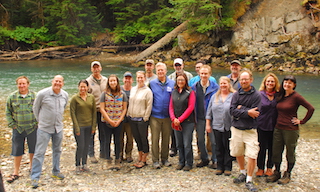 Once you have a Wild and Scenic Rivers proposal and have done your research to determine whether the agency has analyzed your river, the next step is to build community support. American Whitewater has helped build many campaigns for Wild and Scenic Rivers protection by partnering with local, regional, and national organizations. Building an extensive and diverse base of support is critical to getting a river designated. If you want to lead a local effort, find out when your Member of Congress will be home for the August Congressional Recess and get him or her out on the river. Bring in local business leaders, ranchers, river conservationists, tribal representatives, and local elected officials (County Commissioners are often key) who share your enthusiasm for river conservation. Find local champions for your cause who have a relationship with your Member of Congress and start developing a relationship with local staff. All Congressional offices have a local director and often a local staffer who handles water and environmental issues. The job of these staffers is to meet with constituents and share good ideas with their boss. Even if you can't get your Member of Congress out in the first year of a campaign, get the staff out for a hike, fishing trip, or paddling adventure. Most staff spend a lot of time running to meetings and love an excuse to get outside and experience a wild river–keep it fun! Many Wild and Scenic Rivers have been designated largely because they were the fun and rewarding legislative project for an enthusiastic staff member who was able to sell it to his boss. In addition to local staff, every office will have a staff person in Washington DC who handles water and environmental issues. This individual will likely be out to learn more about local issues a couple times a year. Make sure you invite them out for a visit to the river or at least pay a visit during office hours when they are in town with big maps, colorful photos, and a small group of diverse supporters. If you encounter opponents to your effort, listen to their concerns and share your conversations with Congressional staff. Members of Congress don't like surprises when working on legislation; if you are aware of an issue be honest and up front with your staff contacts. In many case they can work with you in partnership to address concerns.
Once you have a Wild and Scenic Rivers proposal and have done your research to determine whether the agency has analyzed your river, the next step is to build community support. American Whitewater has helped build many campaigns for Wild and Scenic Rivers protection by partnering with local, regional, and national organizations. Building an extensive and diverse base of support is critical to getting a river designated. If you want to lead a local effort, find out when your Member of Congress will be home for the August Congressional Recess and get him or her out on the river. Bring in local business leaders, ranchers, river conservationists, tribal representatives, and local elected officials (County Commissioners are often key) who share your enthusiasm for river conservation. Find local champions for your cause who have a relationship with your Member of Congress and start developing a relationship with local staff. All Congressional offices have a local director and often a local staffer who handles water and environmental issues. The job of these staffers is to meet with constituents and share good ideas with their boss. Even if you can't get your Member of Congress out in the first year of a campaign, get the staff out for a hike, fishing trip, or paddling adventure. Most staff spend a lot of time running to meetings and love an excuse to get outside and experience a wild river–keep it fun! Many Wild and Scenic Rivers have been designated largely because they were the fun and rewarding legislative project for an enthusiastic staff member who was able to sell it to his boss. In addition to local staff, every office will have a staff person in Washington DC who handles water and environmental issues. This individual will likely be out to learn more about local issues a couple times a year. Make sure you invite them out for a visit to the river or at least pay a visit during office hours when they are in town with big maps, colorful photos, and a small group of diverse supporters. If you encounter opponents to your effort, listen to their concerns and share your conversations with Congressional staff. Members of Congress don't like surprises when working on legislation; if you are aware of an issue be honest and up front with your staff contacts. In many case they can work with you in partnership to address concerns.
 Once you have your Member of Congress convinced your Wild and Scenic proposal is a good idea, the next step is working with them to develop a legislative proposal. American Whitewater has provided technical support for several campaigns to develop legislation. The Member of Congress often releases a draft bill and collects feedback on the proposed legislation and may refine it before formally introducing in Congress. Once a bill is introduced, more hard work remains. Members of Congress have many priorities and demands on their time. Moving a Wild and Scenic Rivers bill does not typically rise to the level of the “crisis of the day” that has to be dealt with. You can help by being a positive but persistent voice for the legislation. Most Wild and Scenic Rivers bills move because the Member of Congress has a positive experience with the legislation and receives enthusiastic and visible support from constituents. Positive letters expressing appreciation from key constituents (particularly business leaders), Letters to the Editor (be sure to get diverse voices represented), Editorials (meet with the editorial board at your local paper), good press coverage (take a reporter out on the river), showing up at town halls (keep your remarks supportive and positive), and social media posts (be sure to tag the Congressional Champion and the campaign) are all critical to keep your Member of Congress excited about the idea. Stay in touch with your Congressional staff contacts and promptly respond to their requests. It's a good idea to check in and ask what the office needs from the campaign. If your Wild and Scenic River bill is stuck in committee or otherwise not moving, look for opportunities to assist your Member of Congress on other priorities he or she may have. If you can deliver support for another priority, it may provide the incentive for the Member of Congress to spend a bit more of his or her political capital to get your bill moving. Once your bill does get a hearing, moves through Committee, or gets passed, be prepared to generate more positive attention. Too often Members of Congress are asked to do something but not thanked. If you take the time to thank them, it will be remembered and when it comes time to secure adequate funding to manage your newly-designated river, your Member of Congress will be more eager to assist.
Once you have your Member of Congress convinced your Wild and Scenic proposal is a good idea, the next step is working with them to develop a legislative proposal. American Whitewater has provided technical support for several campaigns to develop legislation. The Member of Congress often releases a draft bill and collects feedback on the proposed legislation and may refine it before formally introducing in Congress. Once a bill is introduced, more hard work remains. Members of Congress have many priorities and demands on their time. Moving a Wild and Scenic Rivers bill does not typically rise to the level of the “crisis of the day” that has to be dealt with. You can help by being a positive but persistent voice for the legislation. Most Wild and Scenic Rivers bills move because the Member of Congress has a positive experience with the legislation and receives enthusiastic and visible support from constituents. Positive letters expressing appreciation from key constituents (particularly business leaders), Letters to the Editor (be sure to get diverse voices represented), Editorials (meet with the editorial board at your local paper), good press coverage (take a reporter out on the river), showing up at town halls (keep your remarks supportive and positive), and social media posts (be sure to tag the Congressional Champion and the campaign) are all critical to keep your Member of Congress excited about the idea. Stay in touch with your Congressional staff contacts and promptly respond to their requests. It's a good idea to check in and ask what the office needs from the campaign. If your Wild and Scenic River bill is stuck in committee or otherwise not moving, look for opportunities to assist your Member of Congress on other priorities he or she may have. If you can deliver support for another priority, it may provide the incentive for the Member of Congress to spend a bit more of his or her political capital to get your bill moving. Once your bill does get a hearing, moves through Committee, or gets passed, be prepared to generate more positive attention. Too often Members of Congress are asked to do something but not thanked. If you take the time to thank them, it will be remembered and when it comes time to secure adequate funding to manage your newly-designated river, your Member of Congress will be more eager to assist.
Wild and Scenic River Management
Management of Designated Wild and Scenic Rivers
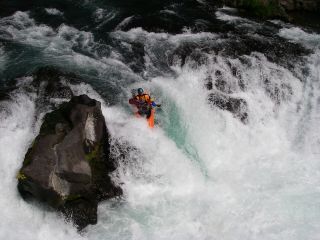 A paddler’s role in effectively utilizing the Wild and Scenic Rivers Act will often be in serving with the agency as a partner in the management of the river. American Whitewater works with river managers across the country to assist in management of Wild and Scenic Rivers and we are in regular contact with Wild and Scenic River program directors and regional staff at all the federal agencies. For paddlers interested in becoming more active in the management and stewardship of a local Wild and Scenic River, we can connect you with local river managers who typically welcome local community support and assistance.
A paddler’s role in effectively utilizing the Wild and Scenic Rivers Act will often be in serving with the agency as a partner in the management of the river. American Whitewater works with river managers across the country to assist in management of Wild and Scenic Rivers and we are in regular contact with Wild and Scenic River program directors and regional staff at all the federal agencies. For paddlers interested in becoming more active in the management and stewardship of a local Wild and Scenic River, we can connect you with local river managers who typically welcome local community support and assistance.
Paddling and other non-motorized recreation is generally considered strongly compatible with all types of Wild and Scenic designation. The only exception is the Headwaters of the Chattooga which was designated with paddling clearly noted as an outstandingly remarkable value. Paddling was banned on the Chattooga for unknown reasons in the 70’s and again in 2004. We continue to work to bring nationally consistent river management to this spectacular river which provides one of the few opportunities for whitewater wilderness exploration on the east coast learn more.
Management Plans
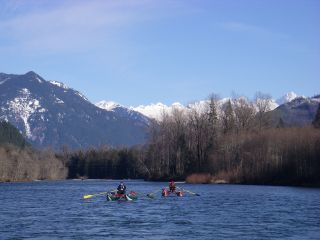 To gain a better understanding of management plans for different rivers in the system we provide links to plans that are available in electronic format below:
To gain a better understanding of management plans for different rivers in the system we provide links to plans that are available in electronic format below:
Since we developed this list, the management agencies have worked to pull all the available plans together and post them on the river management plan page at rivers.gov. The status of Wild and Scenic River Management Plans for rivers managed by the US Forest Service, as of May 2010, can be found here.
Management Policies and Guidance
Economic Benefits
River protection can result in economic benefits for local communities. The National Park Service Rivers and Trails Program publishes a bibliography titled Economic Benefits of Conserved Rivers. Economic studies on specific rivers have been conducted for the Chattooga Wild and Scenic River, Rogue Wild and Scenic River, and West Branch Farmington Wild and Scenic River.
Additional Information
The Interagency Wild & Scenic Rivers Coordinating Council has a webpage, http://www.rivers.gov/, that has a significant amount of valuable information regarding the Wild and Scenic Rivers Act. You can also find a comprehensive list of all designated rivers with the agency responsible for management on the Wikipedia Wild and Scenic Rivers page.
